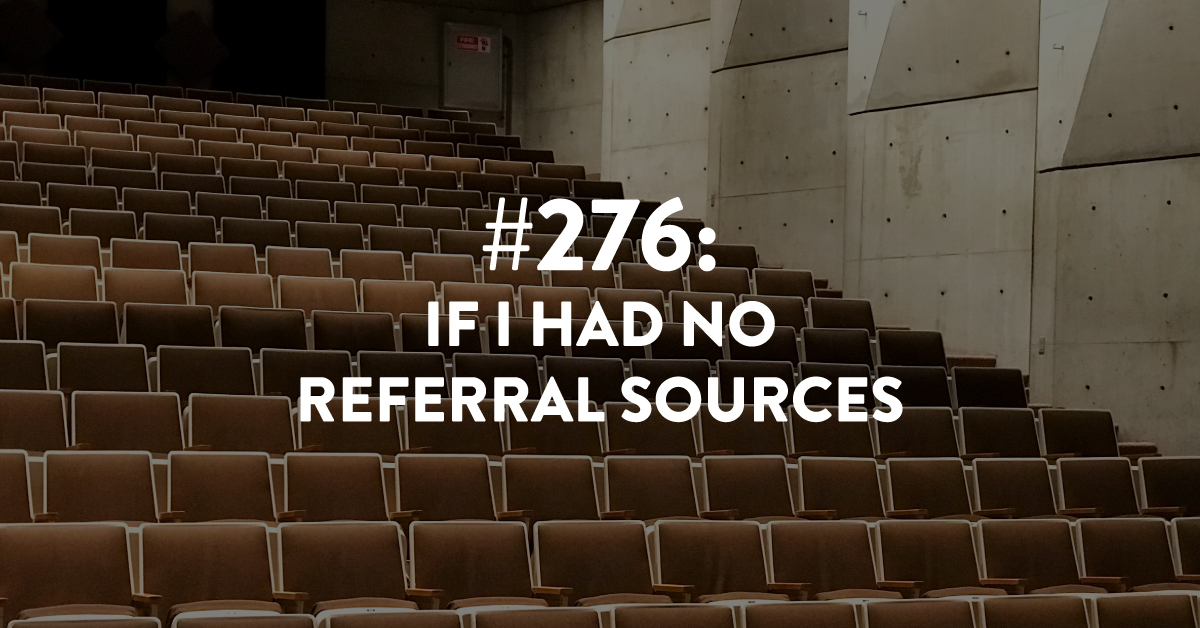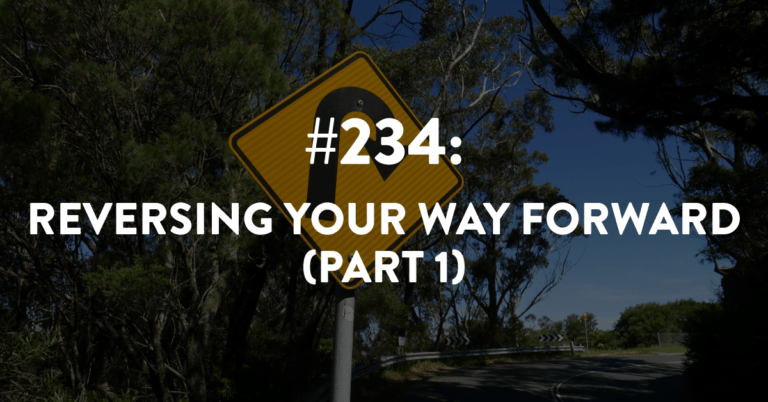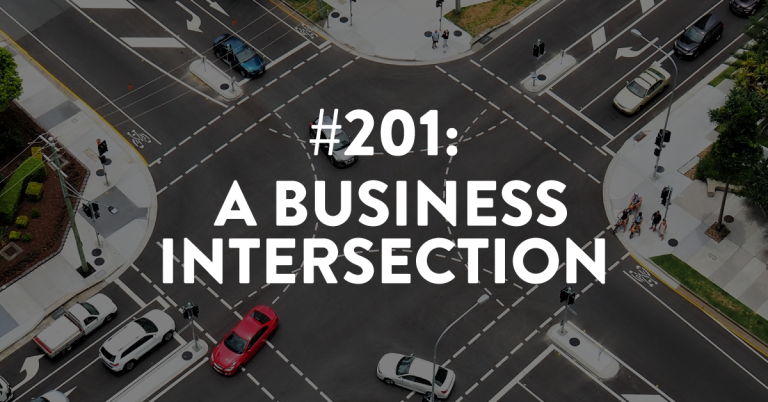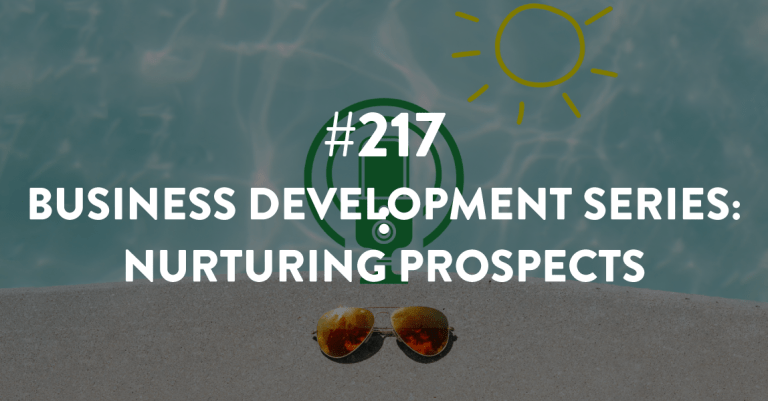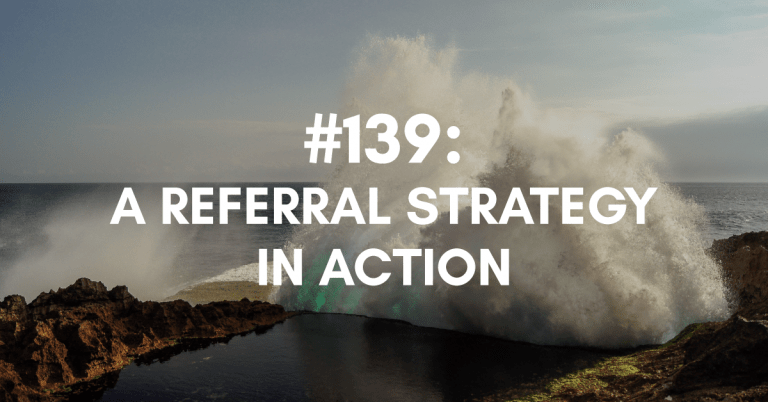Ep #276: If I Had No Referral Sources
Every single business owner will, at some point, experience a reality of having no referral sources. In this episode, I am going to tell you what I would do if I found myself in this situation and had to build my referral sources from scratch.
Knowing your target market and what you offer will impact how you talk about your business and attract referrals. Drawing from my own experiences, I share a few practical steps to help you cultivate referral sources and build a successful business.
Remember that building a referable business takes time and effort, but it is a journey well worth embarking on. By implementing these strategies, you can overcome the challenges of having no referral sources and pave the way for a thriving business.
Links Mentioned During the Episode:
Link to article: What To Do When You Need More Referral Sources
Our private, live training is coming up in one week so submit your application now so you can be invited to the live training! No obligations to join the Building a Referable Business™ coaching program after attending the training.
Next Episode:
Next episode is #277, where we have a special look behind the curtain of a referable business coming up.
Download The Full Episode Transcript
Read the Transcript Below:
Stacey Brown Randall: Every single business owner will at some point experience a reality of having no referral sources. Here’s what I would do if I found myself in this place.
Hey there, and welcome to episode 276 of the Roadmap to Referrals podcast, a show about helping you build a referable business. I’m your host, Stacey Brown Randall.
My journey from business failure to a successful business now 10 years in, I know, generating referrals naturally and consistently has made all the difference. Working with clients around the world, we leverage the science of referrals, protect relationships above all else, and help you build a referable business.
Maybe you’ve heard episodes like the one we’re going to do together today. Maybe you’ve heard episodes like this before, where the host shares what they would do, whether it was different or the same, if they had to start over.
My take on that is what if I didn’t have any referral sources, meaning people who refer clients to me? What would I do?
I hear from many of you that you don’t have referral sources. So I know it’s a pain point. And to be honest, every single business owner does at some point experience it. Yours truly included.
Usually it happens in the beginning, and we don’t have to deal with it as the business grows as long as we take care of the people referring people to us.
But recently, I’ve been noticing an uptick in the number of emails I’ve been getting or people reaching out that are sharing information that I’m like, oh, this needs to be an episode.
So recently, I received one email where the person shared, “I’d love to track referrals.” You guys know I preach that, right? Track your referrals.
They shared, “I’d love to track referrals, except that I only receive maybe one or two a year. So there’s not much data there. I’m at square one in terms of referrals. I have no idea how to even begin.”
Don’t worry. We’re going to fix that today.
Another person recently shared with me, “Since I’m starting my practice, I have very little client referrals and no centers of influence at this point. So I’m thinking that I need to build out these first. I’m still working on identifying my ideal client. Do you have any recommendations or sources that can help me with starting to develop referral sources?”
When answering questions like these, I always try to put myself in the shoes of the person asking.
Now, in this case, one was an interior designer and the other was a change management consultant. Different worlds, but the structure or the format is pretty much the same with a slight little bit of customization.
Mostly specifically the who they’ll be going after to become referral sources, but not how we find them and not how we cultivate them. That’s not different. That’s the same regardless of industry.
I think it would be a great exercise if I walked you through what I would do if I were starting over or, heaven forbid, found myself in a position where I didn’t have any referral sources, or not many, and I needed to get some more.
Now, spoiler alert, I have actually been in this situation two times, to be exact, with both of my companies.
First one, no referral sources were ever cultivated in the four years of its existence. And if you guys know my story, you know, well, that’s the business that failed.
Second company, this one, that is now celebrating 10 years this year. Well, I teach what I finally learned how to do, so it’s why I have this business.
So the first referral source in this business that I cultivated was in the first three months of that second business starting way back in 2013. So I kind of know a thing or two about this.
Also, there is an article that I point people to when they reach out asking for information, because it is actually more comprehensive than what I can give them in an email or what I’m going to be able to share with you in this episode. So this episode will really complement that article.
So I’m going to link to that article in the show notes. And the show notes for this episode is StaceyBrownRandall.com/276, and Stacey has an E.
Okay, but for now, here’s what I would do if I had no referral sources. I’m going to teach these to you in steps.
So, step number one. Step number one is figuring out the building blocks. It’s really the, like, you’re in business to do what? Like, you kind of need to know that because that’s going to impact your messaging, that’s going to impact how people think about you, that’s going to impact how you talk about what you do and who you can help, is you got to know what are you selling, what are you offering, and who do you sell it to?
Like, you can’t go generate referrals until you can figure out who is your ideal client and what does it look like to help that ideal client, meaning the offering, the packages.
So for instance, when people ask me, “OK, so how can I work with you?” I have a standard response. There are three ways that you can work with me. I’ve got my online self-study programs, I have my coaching program, and I also have my VIP Referrals In A Day program. That’s how you work with me.
You kind of have to know, who do you work with and what do you sell. So that is really step one.
So most of the time, people start a business with some idea of what that’s going to look like, right? They’re like, oh, I am an amazing attorney, but I’ve been working at this big firm trying to hit 2,000 hours every year in billables, and that’s crazy. And so I now want to go start my own firm, right?
So you made the decision, like, I’m going to go start my own firm being an attorney. Most of the time, you kind of have an idea of what you’re going to do. But you also have to understand how you’re going to package it, how you’re going to sell it, and who are you going to sell it to.
Because an attorney can have lots of different types of clients, but you’ve got to have an idea of what this looks like, right? And so that is step one.
It’s like the easiest step, unless you don’t know. And then it feels like the hardest step ever. Like, I don’t know how to package. I don’t know how to price. I don’t know how to deliver what I want to deliver to give my people the transformation that they deserve when they pay me money as a client.
So while it’s like, yeah, of course, this is kind of like Business 101. It can be hard when you don’t know, but it is a foundational point you got to know, because you got to know how to talk about it. You got to know how to tell people when they say, hey, what do you do? You would need to know how to answer that question with your elevator pitch, right? That is very, very important.
So step one will always be figuring out the building blocks. So if I were starting a new business, I’d be like, OK. What do I do? Who do I do it for? How do I sell it? What’s my pricing?
Now, every new business owner I meet and have a conversation with, I always tell them this, and they never believe me, but they always come back and tell me I’m right.
What your business looks like in year one, it will probably not look like that in year three.
I don’t mean you’re an attorney in year one, and by year three, you will no longer be an attorney. I just mean what you package, how you price, who you work with, the type of clients you want to work with. All of it just shifts and changes, and that’s a good thing. Lean into that. That means growth.
And that also means you’re listening to the market, and they’re telling you what they want to pay you for and maybe what they don’t want to pay you for. But there’s a lot when it comes to running a business. So those are the things I want you to do with step number one.
Hey, pardon the interruption. How different would 2024 look if you doubled, tripled, or quadrupled the referrals you received this year? That’s right. If you doubled the referrals from this year, what would that look like for you in 2024? If you went from 20 referrals this year to more than 60 next year, just like one of my coaching members did. What if you could add another $30,000, $75,000, or $100,000 or way more to your bottom line next year just from referrals?
If you want to learn how, and I mean exactly how, we make it happen inside the Building a Referable Business Coaching program, then please plan to join me the first week of October for my live, private, invitation-only training. To be invited, you need to complete the BRB application, which you can find at StaceyBrownRandall.com/referable.
Just click the green button that says Apply Now. Once you’re approved, I’ll share with you the live training details. And of course, there’s no obligation to join BRB just for attending the training, but we will talk about how we make the magic happen inside BRB. And of course, I will be talking about how the coaching program works. The link again to complete your application is StaceyBrownRandall.com/referable. Just a few days left to apply. So do so right now. Okay, let’s get back to the episode.
All right, step two. The second thing that I would do if I didn’t have any referral sources and I was having to start over or start from scratch is I would start to identify people in my network who fit my ideal client and I would reach out to connect.
Now, when I say identify people in my network who fit my ideal client, I mean like people in my network I think could maybe hire me.
It means I understand step one, and I know what I sell, who I sell to, and how I’m going to package it. And I would reach out to those people, and I would connect. And I always start with this. Who would take a meeting with me without me feeling like I had to explain why? So who would take a meeting with me?
So when I started this business I have now, now granted, I started it as a productivity and business coach before I learned my referral stuff that I teach to you guys. I thought to myself, okay, who would take a meeting with me? I want to do productivity and business coaching for business owners. I want to do it for smaller businesses, solopreneurs, and smaller teams. Who in my network fits that description, that I also think would take a meeting with me.
So let me be honest, the easiest way to look is for the people I was already paying. So my business attorney, my personal attorney, my financial advisor, the mortgage broker who just helped us refinance our house, the real estate agent. I was like, those people have to take a meeting with me because I make them money, or I recently made them money.
And so this sounds crazy, but it’s true. And you’re just going to reach out, and the point of that meeting is not to sell them. It’s to catch up. It’s to listen. It’s to learn.
In my case, I was telling them, hey, I’ve made some changes. I’d love to share it with you. And I knew these people. I know they care about me. I mean, maybe because I was actually a client of theirs. But it gave me an opportunity to start meeting with people, talking about what I was doing with people that I knew cared about me on some level and would take a meeting with me.
I wasn’t going to have to beg them to take a meeting with me. I wasn’t going to feel like I was reaching out to someone cold. And the truth is, when this happened for me with my coaching, when I did the productivity and business coaching, it turns out that those first three people that took meetings with me became my first three clients because they were like, okay, so what are you doing now? And I told them, they’re like, oh my gosh, I need that. You’re like, awesome, I didn’t even have to sell you, now you’re buying. They’re like, tell me how it works. What’s your coaching package, right?
I’m not saying it’s going to work perfectly like that for you. But I did a lot of back-to-back coffees. I did a lot of let me let people know that I’m doing something different. Because my network, the people in my area, like my network, they used to know me as doing something else. And here I was doing something different. And I had to bridge the gap.
So I did it as a let’s just catch up. I’d love to tell you what I’m doing now. I didn’t go in thinking that any of those people were going to hire me. And it was a huge blessing that some of them did.
But getting clients and having conversations with people who have the potential to hire you helps you refine your messaging, even if those people don’t hire you. I realized after the third conversation that I should change how I was talking about a part of the process of how I talked about my business.
So the first two steps, when I didn’t, for this episode, if I don’t have any referral sources, what are the steps I would do? The first two have absolutely nothing to do with referrals. So please recognize that.
They are, step one, know what you’re selling and who you’re selling it to. Step two, start having conversations with people who have potential to be your ideal client, because that talking allows you to get your messaging right, allows you to get comfortable getting your messaging right with people who do care about you and aren’t gonna think you’re a yo-yo when you walk away and you fumble through exactly how you help people.
It gets you better at it, and yes, you may also start generating some clients right there because of it.
All right, step three. The next thing I would do is identify who knows my ideal client. Who hears from my ideal client about their pain points before I do? And then I would create a list of those that fall into that categorization that I know or would like to know.
Now, here’s the thing. This can be a little bit of a moving target until you get better intel. So if you’re not really sure who is actually hearing from your client, and talking about the pain points that you then solve. So if you’re not really sure who is in front of your clients before you are, you may need to work this out. You may need to think about this. You may need to kind of pay attention to what this looks like.
The other way to think about this is I would also start paying attention to, well, who else works with or sells to my ideal client? So let me give you some examples. So if you’re thinking about who is talking to my ideal client, where the pain point that client is having that I can solve, who’s talking to that client?
So an example is a bookkeeper and a business coach. A business coach is having conversations with their clients. They’re helping their clients perform better, grow, manage processes, systems, all the things. One of the things that could be identified in that business owner client is you need to outsource your bookkeeping Enter, a business coach is having conversations with a client and revealing and identifying you need to outsource your bookkeeping.
Bookkeepers need to know business coaches for that exact reason. Because in that case, a bookkeeper could be the receiver of the referrals and that business coach could turn into a referral source for the bookkeeper.
You may not know the answer to this. You’re going to have to sit and think. Maybe you’re going to have to talk to some other people and maybe have some conversations around, okay, who knows my ideal client, or who is talking to my ideal client where the pain point that I can solve comes up, and I want to make sure I have relationships with those folks.
The other thing is to also consider who works with my ideal client, who’s already selling to my ideal client. Let me get to know them as well, so when that pain point comes up of what I can solve that they can’t do, they will think to refer to me. but it starts out with identifying who those people are, and recognizing who they are, and creating a list of those that match that description that you know, and then also creating a list of those that you don’t probably know that well, but you would like to know.
Okay, step four. Identify networking groups where my ideal client and ideal referral sources are hanging out. Please note I didn’t say everybody that I could possibly know that could possibly understand what I do. I use the word ideal.
Identify networking groups where my ideal client and my ideal referral sources are hanging out. Now, I said networking groups. That does not mean they have to be in person. Sometimes they can be Facebook groups. Sometimes they can be online communities. Sometimes they can be LinkedIn groups. Sometimes they are going to be virtual book clubs. Sometimes they can actually be an organization that meets in person. Sometimes it can be a conference that goes on every year or twice a year.
So I’m using networking groups super loosely here because it can be in a lot of places where there are people. You just have to make sure that those places you’re going to go hang out in is where your ideal client is and where your ideal referral source are hanging out.
Here’s what you got to do. You got to check them out because you don’t know if it’s going to work until you check them out. You gotta join them. That doesn’t mean you can’t, you can certainly go as like a freebie guest, right? As long as they’ll allow you to before you have to join. But you do need to check them out. You are gonna have to join them. You have to figure out where do you need to be. And then you’re gonna have to please, please get involved.
Anytime I have been in a networking-type group where I have been able to cultivate clients from that group and referral sources from that group, it’s because that group knew me. I wasn’t a stranger. I wasn’t the newbie trying to get business on the first meeting I attended trying to pass out my business card to everybody.
I was there. I showed up. I got involved. I did one-on-ones with the people in that group. I got to know people. I was paying attention to who could potentially be a client, who could potentially be a referral source, and I was never leading with that.
I was getting to know these people, but I was making mental notes that then became written notes of who has the potential to maybe hire me, who has the potential to maybe refer me, and I was continuing to cultivate those relationships.
During step three in particular and step four, I would be building out a master list of what we call potential referral sources. So as I am identifying people who talks to my clients before I do, and as I’m identifying networking groups and paying attention to who’s in those networking groups, I am using those two steps, and I am building out a master list of who I think would be a good referral source, potential referral sources.
I’m looking for the commonalities. I’m looking for the groups they belong to. I’m looking at industry events, all the things, right? But I am building out a list.
Now, here’s where my secret weapon comes in. I have a process of how I would then move forward to cultivate them. And I take the long view.
I know when you have a mortgage payment to make, or rent to make, or you would like to pay your employees, or whatever it is, there can be this natural rising in you to just, oh my gosh, make it happen. I need some clients. I need some cash infusion now. And it can cause you to jump the gun. And potentially what you end up doing is actually damaging that relationship. You ultimately end up damaging that relationship because you go in with a hard sell.
You join that networking group in the first meeting, you’re trying to meet everybody you can, you’re trying to press your card into their hands, and you’re just thinking to yourself, that’s done it. Now I got all these people who want to hire me. And all those people are thinking, who was this person? And why do they think they could just walk into this group of ours and start selling to us? Because nobody likes that when they’re on the receiving end of it.
So you have to look at cultivation of your referral sources, of people you want to refer you to actually start referring you. You have to take the long view, and you have to have a process of how you would ultimately cultivate them.
My process actually does the reverse of what most people will tell you to do. Most people walk in and be like, okay, you’ve got these people you want to refer you. Now go ask them to refer you.
Don’t you dare.
Mine is going to teach you how to actually care about them first so that you can build up the relationship and earn the opportunity for them to think about referring you. And we do that through a combination of what our outreach looks like, how we’re connecting with them on a relationship level, and what we’re saying sporadically while we’re doing, which we call referral seeds.
That’s my secret weapon. I’m willing to take the long view And I’m willing to protect those relationships that are brand new, that are budding relationships that I’m trying to nurture. And I’m willing to put them first, but following a process of how I stay connected, how I stay top of mind, how I am more than just one person they had coffee with six months ago that they then forget about me.
And then I also know what to say so that they start thinking about referring me to the point where it becomes their idea. Not one where I had to directly ask them to do it. That’s my secret weapon and that makes my life so much easier.
And the difference is, right, if you’re in this place where you don’t have any referral sources and you’re like, got it, step one, step two, step three, step four, right? I know what comes next. And I teach it inside my program, Referring Machines.
And just about every single person who comes into my coaching program, BRB, Building a Referable Business, they ultimately end up going through that specific training called Referring Machines.
It’s also available for the people who just like, hey, I just want that strategy. And I teach that, exactly what it looks like to take the long view and what exactly that secret weapon looks like in terms of how I cultivate that relationship. And I know what to say and how to plant referral seeds and to make it work so that those people will ultimately start referring me.
I’ve talked about, I believe, I’ve talked about this client before, but I have a client who’s in my coaching program who one of the first trainings they went through, one of the first strategies they learned is the Referring Machines strategy. And in their first three months, they received 15 referrals.
Now, they had some referral sources, so they first executed on the strategy to cultivate more referrals from their existing referral sources, people who’ve referred them before. And so in three months, in 90 days, they got 15 referrals. Their whole goal for the year was 20. And we got them 15, 75% of the way in their first 90 days.
But what was really cool is not only were they cultivating referrals from those existing referral sources, they then also implemented Referring Machines within their first 90 days. Then they learned, okay, I’ve identified people I want to refer me, and I’m following Stacey’s process that we teach inside Referring Machines to get new people to start referring me.
And of those 15 referrals they got in this first 90 days, four of them came from brand new people referring them.
There’s no guarantee when you deploy the strategy I teach inside Referring Machines how quickly it will work for you. But it does work. You just got to work it. And in the case of this client, they have four new people referring them. Who can, will, I said can, definitely will, right? Who will continue and can continue to refer them throughout the year because now they have a system also to take care of them once they refer. So you got to understand it.
I am going to link to an article on the website where you can go more in depth with this than I’m just giving you in this episode.
It’s called, What to Do When You Need More Referral Sources. So you can find it on the website, but I’m going to link to the actual link. It’s kind of long, I don’t expect you to remember it.
I’m going to link to the actual article on the show notes page for this episode, which, of course, is StaceyBrownRandall.com/276. And Stacey has an E.
So you can find that article, go start digging in, learning more about what it looks like to cultivate new people into referral sources. And there’s the four steps of what I would do if I had to start from scratch, if I had to start over, if I had to realize that I woke up one day and had no referral sources. I have no intentions of ever being there, but if I did, that’s what I would do.
Okay, coming up next week is episode 277, and we have a special look behind the curtain of a referable business coming up. I can’t wait to share this with you.
Until then, you know what to do, my friend. Take control of your referrals and build a referable business. Bye for now.

